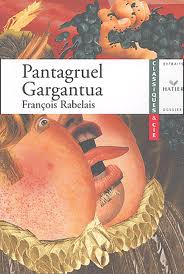Pantagruel, Gargentua
Date: 1533 1546 1930 1938
Region: Europe Africa
Subject: Political/Economic/Social Opinion
Medium: Literature
Artist: François Rabelais (1494-1553)
Confronting Bodies: The divines of the Sorbonne, French parliament, U.S. Customs Department, South African State.
Dates of Actions: 1533, 1546, 1930, 1938
Location: Europe, North America and Africa
Description of Artwork: Pantagruel and Gargentua 1533: The story of Pantagruel, the giant, son of Gargentua, their feats, their wars and adventures. The framework of a mock-heroic chivalrous romance, he laughed at many types of sophistry including legal obscurantism and hermetic-ism, and was an astute observer of the social and political events of his day
The Incident: 1533 France: The first of two parts of Pantagruel, published under a pseudonym and immediately listed on the "Index" of the Sorbonne and on the Official black list of parliament. 1546 France: The Third book of Pantagruel was published under Rabelais' own name and suffered the same fate.
Results of Incident: 1535 Italy-Rome: A Papal bull absolved Rabelais from ecclesiastical censure. 1552 France: Taking advantage of the King's absence from Paris, the divines of the Sorbonne censored the fourth book on publication. 1554 France: Cardinal de Chatillon persuaded Henry II to raise the ban on the works of Rabelais. 1930 United States: The customs Department lifted the ban on all editions with the exception of those with so-called obscene illustrations, specifically Frank C. Pape's drawings for an edition of the Motteux translation. 1938 South Africa-Johannesburg: All works banned.
Source: Banned Books 387 B.C. to 1978 A.D., by Anne Lyon Haight, and Chandler B. Grannis, R.R. Bowker Co, 1978.
